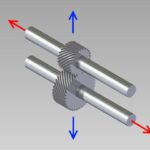Knowing when to replace a timing belt is crucial for preventing catastrophic engine damage. “What A Timing,” you might say, when your car suddenly breaks down due to a failed belt. This article explores the importance of timing belt maintenance, common signs of wear, and the risks associated with neglecting this critical engine component.
What is a Timing Belt and Why is it Important?
A timing belt, typically made of rubber reinforced with high-tensile fibers, is a vital part of your car’s internal combustion engine. It synchronizes the rotation of the crankshaft and camshaft, ensuring that engine valves open and close at precisely the right moment. This precise timing is essential for proper engine function and prevents pistons from colliding with valves, a scenario that can lead to costly repairs or even a complete engine rebuild. What a timing disaster that would be!
Recognizing the Signs of a Failing Timing Belt
Ignoring the warning signs of a worn timing belt can have severe consequences. “What a timing,” you might lament, if you find yourself stranded on the side of the road with a seized engine. Be vigilant and watch for these common indicators:
- Ticking Noise from the Engine: A rhythmic ticking sound emanating from the engine compartment could indicate a worn or loose timing belt.
- Engine Won’t Start: A broken timing belt often results in a complete inability to start the engine. What a timing inconvenience!
- Oil Leaks: A deteriorated timing belt can cause oil to leak from the timing belt cover.
- Rough Idling or Misfiring: A slipping timing belt disrupts the engine’s timing, leading to rough idling, misfiring, and reduced performance. What a timing headache!
Smoke, Fumes, and Other Symptoms
A failing timing belt can also contribute to excessive smoke or unusual fumes from the exhaust. Utilizing modern diagnostic tools can help pinpoint timing belt issues and prevent further damage.
Recommended Timing Belt Replacement Intervals
While replacement intervals vary depending on the vehicle make and model, most manufacturers recommend replacing the timing belt every 60,000 to 100,000 miles. Consult your owner’s manual for specific recommendations. Proactive replacement is far less expensive than dealing with the aftermath of a broken belt. What a timing belt preventative measure!
The Dangers of Timing Belt Stretch
Over time, a timing belt can stretch, leading to performance issues and increasing the risk of catastrophic failure. A stretched belt can cause:
- Erratic Engine Performance: A stretched belt disrupts precise timing, leading to poor engine performance and decreased fuel efficiency.
- Increased Fuel Consumption: Improper timing forces the engine to work harder, consuming more fuel. What a timing waster!
- Risk of Severe Engine Damage (Interference): When a stretched timing belt breaks, it can cause the pistons and valves to collide, resulting in extensive engine damage. What a timing nightmare!
Don’t Wait for Disaster to Strike – Act Now!
Understanding the vital role of your car’s timing belt and adhering to recommended maintenance schedules is crucial for avoiding costly repairs and ensuring reliable performance. Don’t wait for a “what a timing” moment of regret. Consult a qualified mechanic for inspection and replacement services. Regular maintenance is a small price to pay for peace of mind.

